#National Marine Sanctuary
Text



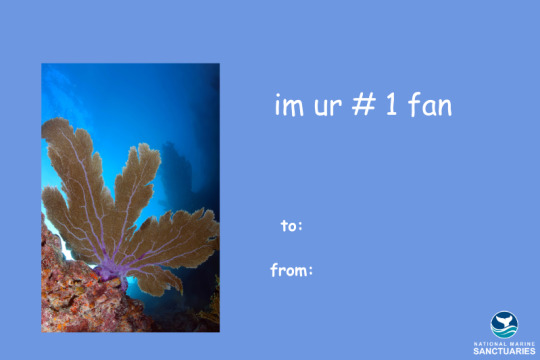


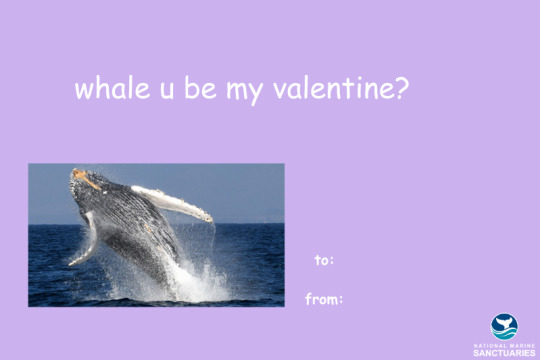

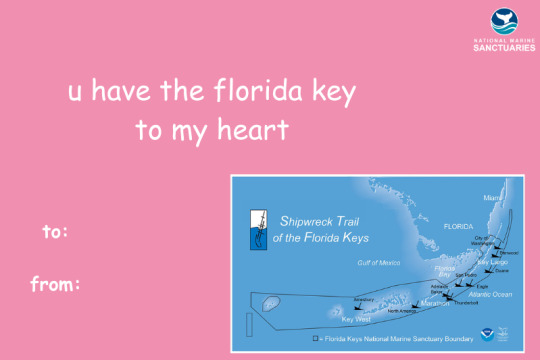

Happy Valentine's Day
With love,
Your National Marine Sanctuary System
462 notes
·
View notes
Text
NOAA National Marine Sanctuary Posters
Free for download!





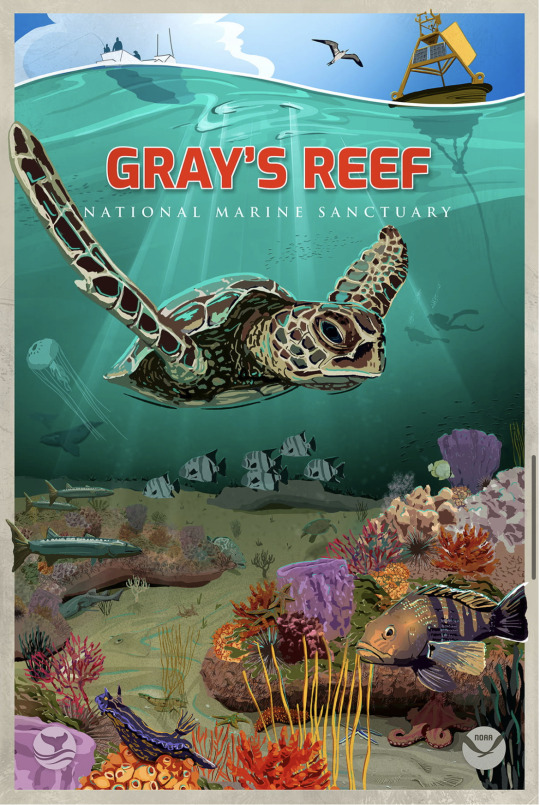


#noaa#national oceanic and atmospheric administration#National marine sanctuary#science art#digital art#art download#free art#science communication
10 notes
·
View notes
Text
A vast underwater ravine off the coasts of New York and New Jersey could soon become a national marine sanctuary.
Hudson Canyon sits about 100 miles offshore in the Atlantic Ocean. It's more than 7 miles wide and 2.5 miles deep at its largest point. It's home to many protected and threatened species, including sperm whales, corals and sea turtles, and is important for fisheries, recreational diving, whale watching and birding, according to the National Oceanic and Atmospheric Administration.
NOAA announced Wednesday that the canyon is being considered for sanctuary designation. A public comment period is open until Aug. 8.
#tidalpunk#ocean#Solarpunk#national marine sanctuary#Hudson Canyon#atlantic ocean#science#the weather channel
127 notes
·
View notes
Text
Stay ‘down to Earth’.

Right now, maybe what you need the most is an opportunity to reconnect with the Earth. This Earth Day, get re-energized by focusing on celebrating our amazing planet.
There are plenty of ways to have fun and celebrate the environment, whether it’s getting outside, consuming Earth-centered media, or creating art. Some ideas to relax:
Check out a new natural area or visit an old favorite, reflecting on how it makes you feel to be there. Need ideas? Explore a National Marine Sanctuary or a National Estuarine Research Reserve.
Try counting 10 different types of plants and animals you can observe.
Create Earth-focused art. If you’re up for it, create with a purpose — use supplies that would otherwise go in the trash or make an art piece that raises awareness about something you care about. Check out our Earth Day art graphics if you need some inspiration!
#22 april#earth-focused art#art graphics#National marine sanctuary#National estuarine research reserve#visit a natural area#earth day#NOAA#earth from orbit#blue marble#get involved#raise awareness
0 notes
Text
Amazing Wildlife to Explore in Florida
Florida is a unique and beautiful state, full of natural wonders, hidden gems, and amazing wildlife. From the swamps of the Everglades to the crystal-clear waters of the Florida Keys, there is something for everyone to explore.
While many people think of Florida as a place of beaches and wild parties, it is actually an incredibly biodiverse place, with some of the most important ecosystems and…

View On WordPress
#Crystal River#Everglades National Park#Florida wildlife#Juno Beach#Loggerhead Marinelife Center#Loggerhead Sea Turtles#National Marine Sanctuary#Sanibel Island
1 note
·
View note
Text

Sea lions rest on a floating dock in a Pacific Ocean marine area that is part of the proposed Chumash Heritage national marine sanctuary along California’s central coast near Avila Beach, US. It would be the first national marine sanctuary in the country nominated by an Indigenous tribe and protect ocean ecosystems, marine life and cultural sites while prohibiting energy development. Tribal members of the Chumash would also co-steward the 5,617 sq mile area with 134 miles of coastline
Photograph: Mario Tama/Getty Images
#mario tama#photographer#getty images#sea lions#animal#mammal#wildlife#pacific ocean#chumash heritage national marine sanctuary#california#avila beach#united states#nature
13 notes
·
View notes
Note
https://aqua.org/stories/2023-06-26-sanctuary-state thoughts? I really don’t like this. THE National Aquarium has fully embraced the ARA rhetoric around dolphins in captivity, saying that their own dolphin exhibit is “patronizing” and “for human entertainment”, despite the fact that they’re a scientific aquarium that is clearly leaps and bounds better than any of those cheap tourist trap dolphin swim places. The “Whale Sanctuary Project” has clearly stated on its website that they want to put an end to all wildlife in captivity, so it honestly makes me sick that National is partnering with them. They’ve turned their backs on all their colleagues in the AZA that have dolphins and slandered them. I hope they lose their AZA accreditation over this.

Thank you for this ask. I read National's statement a few weeks ago, and it made me sick to my stomach. I didn't post about it because honestly I was unsure I would be able to speak on the issue without becoming overly emotional, but you have expressed basically everything I feel.
At this point, it isn't that National is moving their dolphins to a sea pen that bothers me. We've known this for seven years, and since they're an AZA facility, I had to at least have a little faith that this was for the animals' wellbeing. I've met several trainers and veterinarians who left the National Aquarium at least in part due to their handling of the dolphin situation, but I never imagined it was this bad until now. This world-renowned aquarium is repeating activist rhetoric pretty much verbatim. They're partnering with an anti-zoo organization that works against everything they stand for as an institution. They're publicly slandering their colleagues. If I didn't know better, I would think this was a thinkpiece by PETA and not an official statement from an AZA institution. I also find it incredibly disturbing that they claim the "success" of SEA LIFE's Beluga Whale Sanctuary (and the non-existent Whale Sanctuary Project??) serves as their example, when it has been... slightly less than successful.
If I could ask National's CEO one thing, it would be this: Are the other animals in your collection not entertainment? What makes them different? What makes them "education" but your dolphins "exploitation"? Elasmobranchs, for example, are a staple of public aquaria, but they present their own host of issues. Reproductive disease, nutritional imbalances, musculoskeletal deformities. Why are you giving up on your dolphins but not them? Will you let an activist group take them next?
I'm afraid I must agree with you... they do not deserve to remain in the AZA. Not if they're going to brazenly accuse their fellow members of animal abuse while allowing anti-zoo organizations to dictate their own animals' care. I'm really, really scared of where this is going, and I would love to see the other AZA aquariums housing cetaceans (Brookfield Zoo, Disney's Epcot, Georgia Aquarium, Indianapolis Zoo, Marineland Florida, Mystic Aquarium, Shedd Aquarium, Texas State Aquarium, the SeaWorld parks, and numerous international members) release a joint statement on the issue affirming their committment to ex situ conservation, research, and public outreach. And I deeply hope none of the "10 other dolphin-holding institutions" mentioned are AZA facilities.
I wish the best to Beau, Foster, Chesapeake, Bayley, Spirit, Jade, and their caregivers, who are losing the animals to whom they've devoted their lives to a situation in which they have no say.
I do also wish to share this statement from Jason Bruck's lab. Dr. Bruck is a PhD animal behaviorist specializing in dolphin communication and cognition both in the wild and in human care.


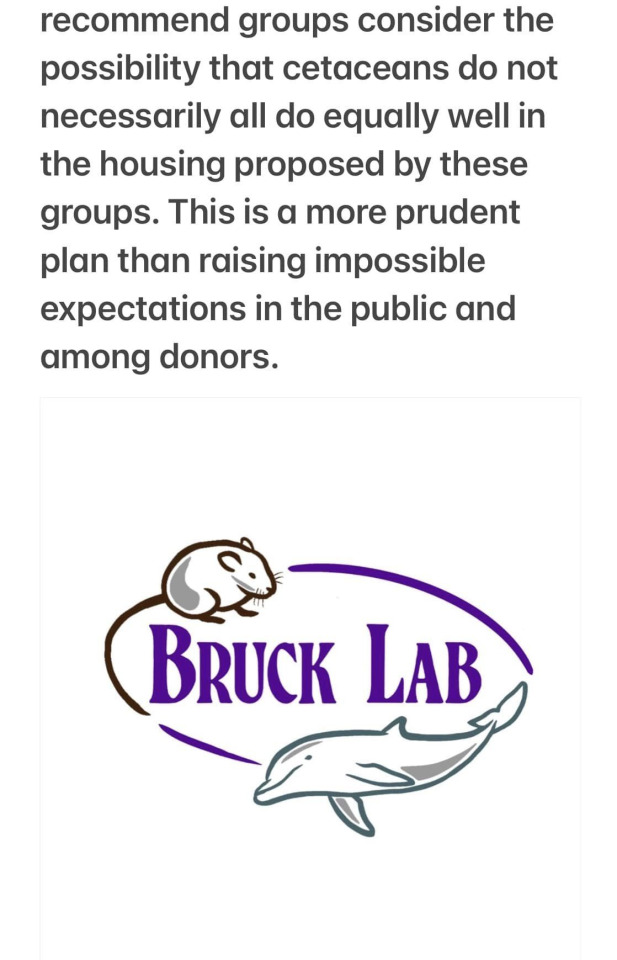
#dolphins#cetaceans#marine mammals#animal welfare#animal sanctuaries#national aquarium#aquariums#ara insanity#answered asks#judesaintfrncis
32 notes
·
View notes
Text
3 notes
·
View notes
Text
2 notes
·
View notes
Text
The Smallest Marine Mammal Who Ever Lived (in North America)

The sea otter, the smallest marine mammal in North America, is a member of the weasel family and the only marine mammal that doesn’t have blubber to keep it warm. Instead, the sea otter relies on its thick fur to keep its body temperature around 100 degrees.
Who's Afraid of Little Old Me?

Whale sharks are known to be the largest fish in the world, with some individuals measuring 20 meters (60 feet) long and weighing around 40 tons. But, do not fear! Despite their tremendous size, they are gentle giants, using their nearly 1.5 m-wide (5-foot) mouths to filter plankton out of large volumes of water as they swim. Nothing to be afraid of.
267 notes
·
View notes
Text
Ship Noises Mute the Songs of Humpback Whales
Drowned out by the din of passing ships, humpback whales attempting to breed off the coast of Japan are cutting their conversations short.
— By Katherine J. Wu

A Humpback Whale breaching near Stellwagen Bank National Marine Sanctuary in Massachusetts Bay. These whales may be imperiled by the sounds of passing ships, which silence their songs during mating season. Photo Credit: Whit Welles, Wikimedia Commons
With Its Enigmatic Chorus of Clicks, Groans, and Whistles, the haunting opus of the humpback whale (Megaptera novaeangliae) is one of the ocean’s most striking sounds. Every winter, humpbacks may swim thousands of miles to their seasonal breeding grounds, where males competing for mates fill the waters with soft serenades. But off the coasts of Japan, these seas are falling silent—and it seems humans are to blame.
Today, in the journal PLOS ONE, researchers report that the noises emanating from human-operated cargo ships disrupt the mating songs of humpback whales. Drowned out by the underwater din, some whales are even going completely mum in the vicinity of these vessels—which could have serious consequences for their reproductive success.
Beneath the surface of the sea, light falters fast. But because sound travels faster in water than air, keen audiophiles like the humpback whale use sound to navigate the dimly lit underwater world. These gentle giants engage in casual chatter year-round, but breeding season tends to feature prominent displays of song from males. Whale compositions are exquisitely complex, with at least 34 distinct sound types in the repertoire. Males will carefully remix their melodies as the years go by, and even pass tunes from population to population like vocal culture.
Despite all this, scientists still aren’t entirely sure why male humpbacks sing. Though musicality surges during periods of mating, song could serve a multitude of purposes, from gruff territorial warnings to come-hither calls. Whatever the whales’ rationale, it’s clear that song is crucial: Once they’ve warmed up, humpbacks can sing for hours on end, their ghostly echoes reverberating up to 100 miles through the surrounding sea.
youtube
But when humans enter the mix, being pitch perfect can be a double-edged sword. Unnatural noises from technological advancements like seismic airguns and military sonar have permanently disabled—and even killed—whales and their seafaring relatives.
Even the low-frequency hum of ships appears to perturb whales in conversation. The drones emitted by these ships can actually overlap with the frequencies of whale song, making it more difficult for humpbacks to pick out important bits of intel from the surrounding cacophony—the underwater equivalent of struggling to hear a friend in a busy restaurant.
Several researchers have observed whales changing their behavior in the presence of ships. However, compared to unmistakable consequences from airguns and sonar, it’s been challenging to reach a consensus on the extent of the effects of these more muted sources of noise, explains study author Tomonari Akamatsu, a biologist at the Japan Fisheries Research and Education Agency. In shipping hubs that see a lot of traffic, for instance, it’s difficult to disentangle which among the many possible disturbances are most problematic.
But the small outpost of Chichijima in Japan’s Ogasawara Islands presented a rare opportunity for Akamatsu and his colleagues. Separated from the southeastern coast of Japan by over 600 miles, the 2,000 or so residents of Chichijima receive just one daily ship: the Hahajima Maru, a small passenger-cargo vessel that ferries in a regular supply of goods and people from afar.
For the most part, the waters in this remote part of the world are quiet. But each winter, the seas swell with the symphony of hundreds of humpback whales eager to mingle with their mates—giving the researchers the chance to observe the effects of a single ship on the behavior of a wild population. The pristine nature of this locale stripped away other variables that could muddy the waters—other vessels, for instance, or inconsistent traffic.
“This study presents a really special and unique situation,” says Rosalind Rolland, a whale expert and veterinarian at the Anderson Cabot Center for Ocean Life at the New England Aquarium who did not participate in the research. “It’s very difficult to find anywhere in the ocean where there is just a single source of ocean noise. Most times there is noise from all directions.”
By placing two recorders in the waters near Chichijima, the researchers captured a series of whale vocalizations between the months of February and May 2017. Each day, they recorded one or two male humpbacks, amassing tracks of 53 soloists in total—half in the presence of the ship, and half without. The team also used the recordings to pinpoint the whales’ positions relative to the machinery as they sang, tracking their movements through time.
When the team mapped out the whales’ responses, the results were sobering. If the vessel was present, it produced, at its loudest, about 150 decibels of noise, comparable to the volume of a shotgun—and humpbacks seemed to shirk from its path, vacating the areas closest to the shipping lane. The whales that remained within 1200 meters of the ship produced fewer sounds overall. Some even cut their serenades off entirely—and most who did still hadn’t resumed their songs half an hour after the ship had passed through.
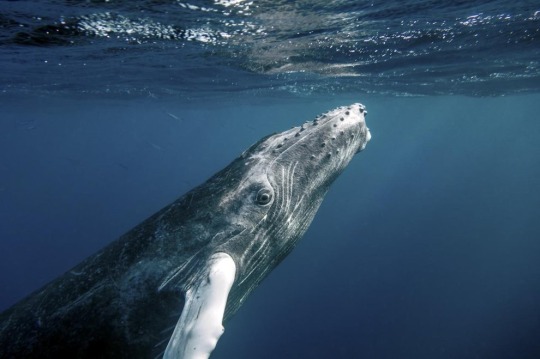
Humpback Whales rely on sound to communicate in the dark ocean waters. During their winter breeding season, males will sing for hours on end—but their serenades may be stifled by the sounds of passing ships. Photo Credit: Christopher Michel, Flickr
Akamatsu had initially assumed that in the presence of the ship, the humpbacks would raise their voices or change the frequency at which they sang—both strategies that might enable whales to discern calls above the clang and clamor. But, he says, perhaps this reticent response is an adaptive, energy-saving strategy.
“It’s actually very clever,” Akamatsu explains. “They know it’s temporary, so they just wait for it to pass.”
Vocal adjustments, after all, are exhausting. Even 500 to 1200 meters away from the ship, the whales were still contending with a noise level of about 100 decibels—roughly equivalent to a motorcycle or a raucous rock band. Perhaps, instead of attempting to outperform the uproar, humpbacks were simply waiting out the storm.
Every whale who stopped his song did eventually rebound from the chorus interruptus—and such resilience may spell tentatively good news for the residents of Chichijima, who remain tied to the Hahajima Maru’s regular visits. “This ship is a lifeline for an isolated island,” Akamatsu explains. “Humans need that ship to survive.”
But Michelle Fournet, a wildlife scientist in the Bioacoustics Research Program at Cornell University, points out that it’s also possible the humpbacks’ silence may not be indicative of flexibility at all. Muted by the regularity of passing ships, whales may be running out of sustainable strategies to cope, and instead accepting defeat. While bellowing above the fray may be exhausting, it at least offers whales a fighting chance of still being heard. Complete silence, on the other hand, brings the probability of communication down to zero. If humpbacks want any shot at coupling up, they can only wait so long for ambient noise to die down.
“Humpbacks have to contend with a lot of variability,” says Fournet, who was not involved in the research. “And they’re capable of adapting to natural sounds. But they may not always be able to apply those same strategies to [human-made] noise.”
While no long-term repercussions have yet been found, it will be imperative to measure the ship’s effects on humpback reproduction, Fournet adds. Even though most populations of humpbacks are no longer considered endangered, pods around the world remain vulnerable to human interference. And despite decades of study, researchers are still puzzling through the intricacies of whale song. It’s unclear how disastrous even the tiniest tweaks to a tune could be for humpbacks trying to find each other in the dark.
And, of course, the calm of Chichijima is the exception, not the rule: Most ships don’t sail solo. Acoustic pollution from human-made vessels will likely be on the upswing for years to come, warns Paul Wensveen, a biologist who studies marine acoustics at the University of Iceland. Even technological Band-Aids like insulators, which muffle the sound from ships’ propellers, are quickly overwhelmed by the sheer volume of noise radiating from the world’s busiest ports.
If humankind’s presence in the ocean continues to grow, there may soon be little stopping the whales’ brief intermission in song from turning into an irreversible coda.
“Some of the whales’ strategies have been successful so far,” says Fournet. “But as the ocean gets louder, and more vessels come in, we can only expect to see more changes.”
#Youtube#Nature#NOVA#Humpback 🐋 Whales 🐳#Katherine J. Wu#Stellwagen Bank | National Marine Sanctuary | Massachusetts Bay
0 notes
Text
Amazing Travel Adventures - Michigan
New Blog Post Alert
Amazing Travel Adventures - Michigan is a travel destination guide sharing Michigan's breathtaking landscapes, sandy beach, the Home of Motown Music and so much more. Click the link to start planning your next Michigan getaway!
Hello and welcome to my latest travel guide destination blog post Amazing Travel Adventures – Michigan. Together we can explore Mackinac Island (the arch, the state park and of course the island itself), the Motown Museum (where my favorite kind of music was created), Michigan’s Upper Peninsula (or the U.P for those in the know and now you know) and what it has to offer and see plus so much more.…

View On WordPress
#A Few of my Favorite Things#Amazing Travel#Amazing Travel Adventures#Mackinac Island#Motown Museum#New Blog Post#Pictured Rocks National Seashore#Sleeping Bear Dunes National Lakeshore#Tahquamenon Falls State Park#Thunder Bay National Marine Sanctuary#Travel#Travel Adventures#Travel Destination Guide#Travel Wednesday#Where to Wednesday
1 note
·
View note
Link
#Headlines#Science and Environment#American#Contextomy#Coral#Earth#Earth Optimism#Endangered Species Act#Guam#Institute#kingfisher#Nancy Knowlton#National Marine Sanctuary of American Samoa#optimism#optimistic#ozone#parrot#Puerto Rico#reef#Samoa#Smithsonian#summit#US Fish and Wildlife
0 notes
Text
Channel Island National Marine Sanctuary, California, USA

All along the Pacific Coast of North America, giant stands of kelp up to 30.48 metres high, like this one in California 's Channel Islands, provide habitat for a vast number of fish, invertebrates, and sea mammals. Giant kelp, technically a type of brown algae, is the largest of all seaweed and one of the fastest growing of any organism, as much as 0.61 metres per day! The gas-filled pods you see in this image help the kelp float. Like the trees in the Amazon, the kelp forests of our oceans are key to the health of marine life and our oceans.
0 notes
Text
Companies Join Initiative to Make Maritime Shipping More Sustainable - Fairtrade News Today
Companies Join Initiative to Make Maritime Shipping More Sustainable – Fairtrade News Today
Companies Join Initiative to Make Maritime Shipping More Sustainable – Fairtrade News Today – EIN Presswire
Trusted News Since 1995
A service for global professionals
·
Tuesday, July 12, 2022
·
580,943,204
Articles
·
3+ Million Readers
News Monitoring and Press Release Distribution Tools
Press Releases
Events & Conferences
Source link
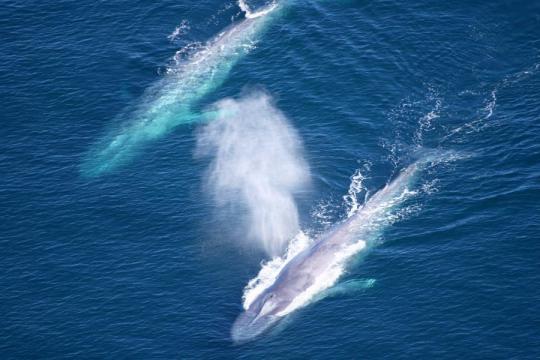
View On WordPress
0 notes
Photo

Massachusetts, US
A young humpback whale, megaptera novaeangliae, breaches while feeding in the waters of the Stellwagen Bank National Marine Sanctuary off the coast of Provincetown.
Photograph: CJ Gunther/EPA
#cj gunther#photographer#epa#massachusetts#united states#humpback whale#whale#animal#megaptera novaeangliae#stellwagen bank national marine sanctuary#provincetown#nature
33 notes
·
View notes